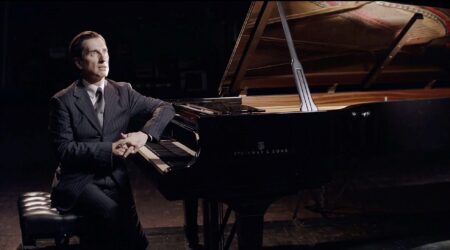Chasing the Ring of Fire
A little after 5pm on Sunday, May 20th, the sun was a bright, perfect circle in the sky; then, in a span of a few minutes, a dark “bite” appeared at its edge. Although the slight darkening was invisible to bare eyes, there was an excited shift on this beach on Whiskeytown Lake, in northwestern […]
 A little after 5pm on Sunday, May 20th, the sun was a bright, perfect circle in the sky; then, in a span of a few minutes, a dark “bite” appeared at its edge. Although the slight darkening was invisible to bare eyes, there was an excited shift on this beach on Whiskeytown Lake, in northwestern California: chatter, a few gasps, several hands pointing up. Some two thousand people had congregated here, from all over the state and beyond, to see the annular solar eclipse. For two hours we would watch the Moon crawl across – and almost completely block – the Sun, leaving only a thin “ring of fire” visible at its peak.
A little after 5pm on Sunday, May 20th, the sun was a bright, perfect circle in the sky; then, in a span of a few minutes, a dark “bite” appeared at its edge. Although the slight darkening was invisible to bare eyes, there was an excited shift on this beach on Whiskeytown Lake, in northwestern California: chatter, a few gasps, several hands pointing up. Some two thousand people had congregated here, from all over the state and beyond, to see the annular solar eclipse. For two hours we would watch the Moon crawl across – and almost completely block – the Sun, leaving only a thin “ring of fire” visible at its peak.
This was my first solar eclipse, and I couldn’t hide my excitement. I’d seen several lunar eclipses, the Moon turning red-brown from Earth’s shadow; I’d also seen the Hale-Bopp comet and various neighboring planets through telescopes, but none of these sights had quite the same immediacy and impact as a solar eclipse. This eclipse would be visible in much of California, blocking some 90% of the Sun in San Francisco and showing a “crescent Sun” at its peak, but I wanted to see the annular eclipse properly, and driving four hours north to be right in its path didn’t faze me.
Eclipses aren’t rare, but have a very narrow path that rarely repeats: the last annular eclipse visible in the continental United States was in 1994; the last total eclipse was in 1979. Solar eclipses happen when the Moon passes between the Earth and the Sun, blocking our view of the Sun for a few surreal minutes. By a strange quirk of astronomical luck, the Sun and our Moon look the same size in our sky – although the Sun’s diameter is more than four hundred times that of the Moon, it is also much further away. Seen from space, a solar eclipse looks like a dark, round shadow cast on the Earth – the Moon’s shadow blocking the sunlight. On May 20th, the alignment was slightly off between the three celestial bodies, so that the Moon appeared nickel-sized to the Sun’s quarter, leaving a bright ring uncovered (“annulus” being Latin for “little ring”).
 At Whiskeytown Lake, it wasn’t hard to spot the crowd of eclipse enthusiasts. In a corner of the parking lot, away from the splashing children and sunbathers, was a forest of telescopes of all shapes and sizes – Shasta Astronomy Club members and observers from further afield were picnicking and waiting for the show to start. Pinhole projectors, both store-bought and home-rigged, were also scattered throughout. Park rangers sold eclipse-viewing glasses and commemorative posters. The mood was decidedly festive as the eclipse approached.
At Whiskeytown Lake, it wasn’t hard to spot the crowd of eclipse enthusiasts. In a corner of the parking lot, away from the splashing children and sunbathers, was a forest of telescopes of all shapes and sizes – Shasta Astronomy Club members and observers from further afield were picnicking and waiting for the show to start. Pinhole projectors, both store-bought and home-rigged, were also scattered throughout. Park rangers sold eclipse-viewing glasses and commemorative posters. The mood was decidedly festive as the eclipse approached.
Along the beach, people of all ages looked up through cardboard eclipse glasses, welding masks and special filters. Those with telescopes were generous enough to give curious kids and adults a peek, while other spectators crowded around a pair of rigged binoculars projecting the shadowed Sun’s image onto white cardboard. As the Moon crawled across the Sun that evening, the crescent Sun was visible not only through telescopes and pinhole viewers, but under nearby trees, the gaps between leaves casting crescent shadows on the ground. Science students from a local high school lined up in a row, interlacing their fingers to cast the unusual shadows with their hands. Later, looking at photos of the eclipse from around the world, I would see this effect in someone’s clever use of a colander.
As the eclipse edged closer to annularity, the crowd swelled excitedly around the telescopes. I wasn’t the only adult with a childlike gleeful grin on my face. Closer and closer, the dark disc of the Moon slid across the Sun, now breaking away from the edge, first a lopsided curve, then the perfect ring, as the spectators cheered, “Wow, there it goes!” “It’s so beautiful!” A young girl next to me, turning earnestly to her mother, gasped, “I’ll never, ever forget this!” Through my dark eclipse glasses, I could see a black sky with only a bright orange ring where the Sun used to be, while telescopes, using various filters, cast the ring in white, red, even green. We held our breath for a few short minutes, as the bright day became a silvery twilight. Then the Moon shifted further across the Sun and broke the circle.
Much of the crowd wandered away at this point, but I stayed to watch until the Moon was just a tiny sliver of shadow at the Sun’s edge, not wanting to break the spell so soon. The next solar eclipse visible in California, this one total, will be in August of 2017. I’ve already marked my calendar.
Kseniya Tuchinskaya is an overthinker, urban meanderer, photo-taker and science fangirl. Her biggest challenge is finding enough hours in a day to fit in all the reading she wants to do.





